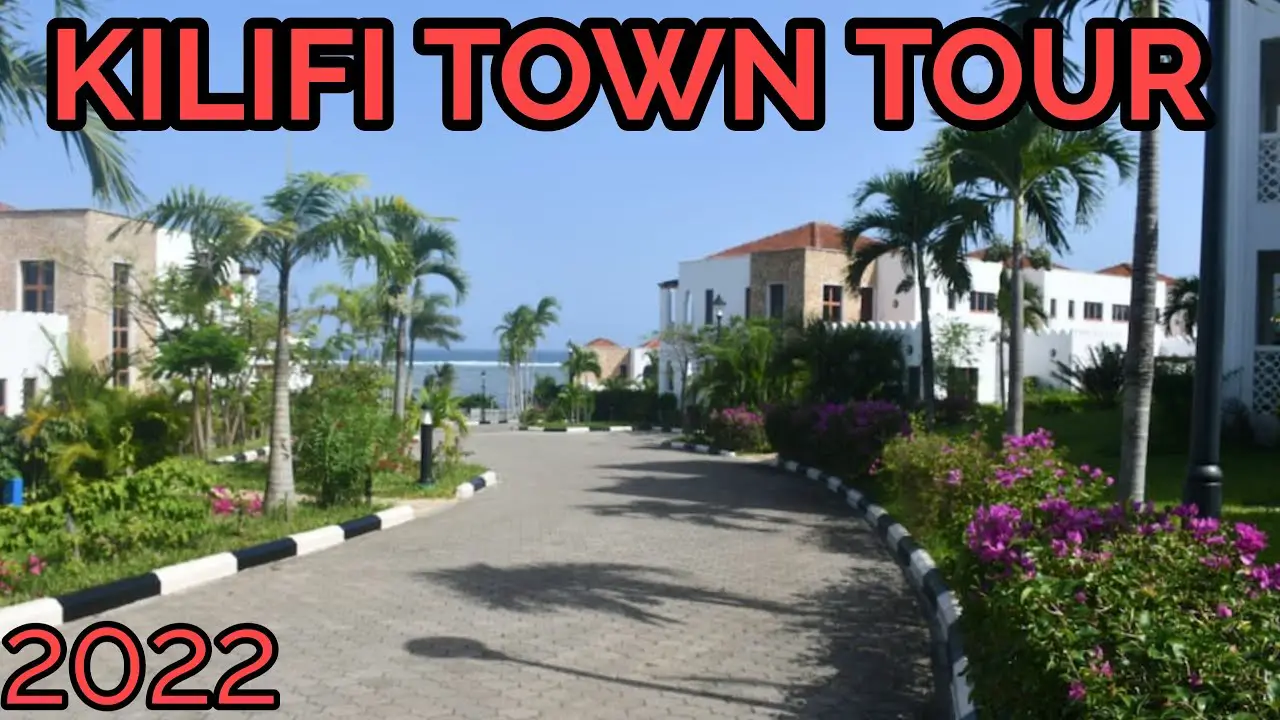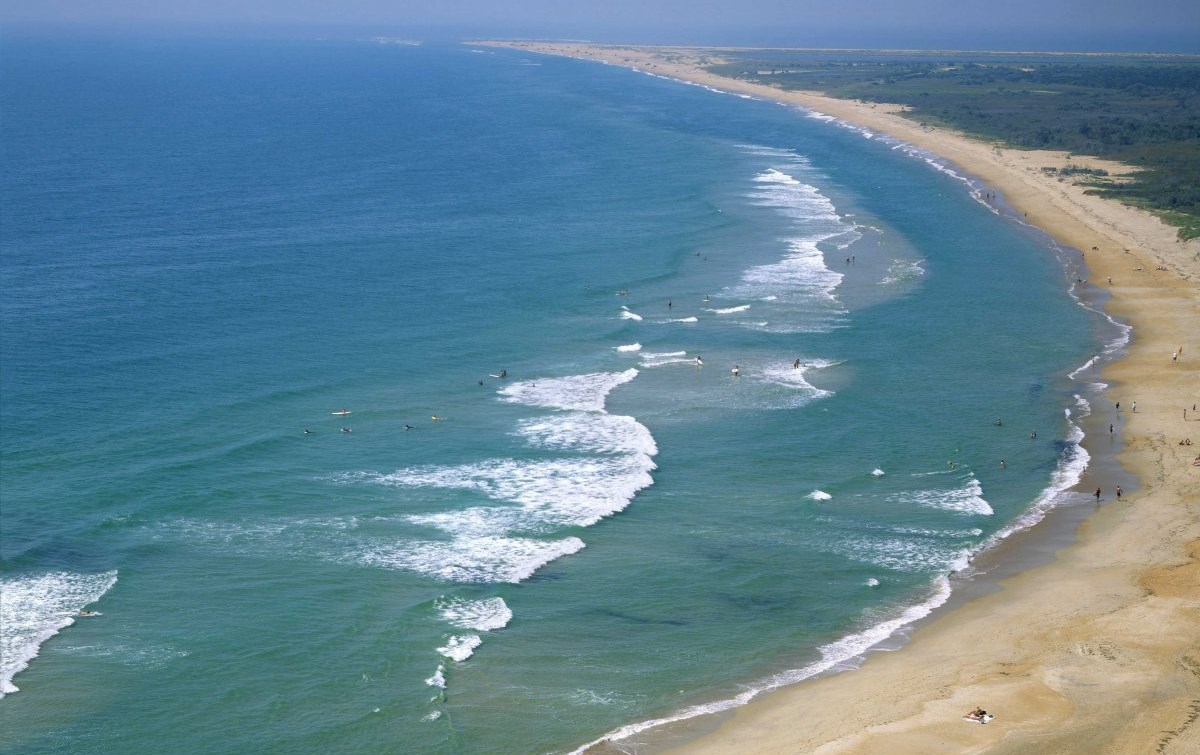Imagine yourself strolling through an idyllic coastal town, surrounded by crystal-clear turquoise waters, swaying palm trees, and a gentle sea breeze caressing your face. Welcome to Kilifi Town, a hidden gem nestled on Kenya’s stunning coastline. This charming town offers a delightful mix of cultural experiences, pristine beaches, and a vibrant local community that warmly embraces visitors. With its rich history, breathtaking natural beauty, and a laid-back atmosphere, Kilifi Town is the perfect destination for those seeking an authentic and unforgettable coastal getaway.

History
Early settlements
Kilifi, a coastal town in Kenya, has a rich history that dates back centuries. Archaeological evidence suggests that the area was first settled by the Bantu tribes around the 10th century. These early settlements were agrarian communities that relied heavily on farming and fishing for sustenance. The fertile soil along the Kilifi Creek provided them with abundant crops, while the Indian Ocean offered a vast array of marine resources.
Swahili culture
The influence of Swahili culture is deeply ingrained in the history of Kilifi. As the Bantu tribes interacted with Arab traders who arrived on the coast, a unique Swahili culture emerged. This cultural fusion is evident in the architecture, language, and dress of the people of Kilifi. The Swahili language, a blend of Bantu and Arabic, is still widely spoken in the region. Additionally, the distinctive Swahili-style houses, with their intricately carved doors and Arabic-inspired designs, stand as a testament to the rich heritage of Kilifi.
Colonial era
The colonial era had a significant impact on Kilifi’s history. In the late 19th century, the area became part of the British East Africa Protectorate. The British established a presence in Kilifi, constructing administrative buildings and infrastructure. The town served as a regional hub for trade, connecting the interior to the coastal ports. This period saw the introduction of new crops, such as cashew nuts and coconuts, which brought economic growth to the area. However, it also marked a time of social and political upheaval for the local population, as they struggled for independence and control over their land.
Geography
Location
Kilifi is located on the Kenyan coast, approximately 55 kilometers north of Mombasa. Situated along the stunning Kilifi Creek, the town offers breathtaking views of the Indian Ocean. Its strategic position between Mombasa and Malindi makes it an ideal stopover for travelers exploring the coastal region.
Climate
Kilifi enjoys a tropical climate throughout the year. The temperatures remain consistently warm, ranging from 25 to 30 degrees Celsius (77 to 86 degrees Fahrenheit). The town experiences two distinct rainy seasons, with the long rains occurring between March and May and the short rains between October and November. The lush vegetation and vibrant flora are a testament to the favorable climate of Kilifi.
Natural features
Kilifi is blessed with a diverse range of natural features that add to its allure. The Kilifi Creek is a prominent feature, offering a serene setting for boat rides and watersports. The clear blue waters of the Indian Ocean are home to a colorful array of marine life, making it a popular destination for snorkeling and scuba diving enthusiasts. Kilifi’s coastline also boasts pristine sandy beaches that stretch for miles, providing the perfect backdrop for relaxation and sunbathing.

Demographics
Population
Kilifi has a vibrant and growing population, with approximately X residents. The town’s population has been steadily increasing due to both natural growth and migration from other parts of Kenya. The diverse mix of ethnic groups contributes to the cultural fabric of Kilifi, fostering a sense of unity and inclusivity.
Ethnic groups
The population of Kilifi consists of various ethnic communities, each with its distinct cultural practices and traditions. The dominant ethnic group in the region is the Mijikenda, who have ancestral ties to the area. Other significant ethnic communities include the Swahili, Arabs, and Bantu groups. This multicultural society enriches the town, creating a harmonious coexistence and an appreciation for different cultural backgrounds.
Religion
Religion plays a vital role in Kilifi, with Islam being the predominant faith practiced by a large portion of the population. Mosques dot the town, serving as places of prayer and community gatherings. Additionally, Christianity has a significant following, with churches providing spiritual guidance and fostering a strong sense of community among the faithful.
Economy
Traditional industries
Kilifi has long been associated with agriculture and fishing, which have formed the backbone of the local economy. Traditional farming activities include the cultivation of cashew nuts, coconuts, maize, and cassava. Fishing, both in the creek and the ocean, has been a vital source of income for generations of Kilifi residents.
Agriculture
Kilifi’s fertile soil and favorable climate make it ideal for agriculture. The region’s agricultural sector has evolved, embracing modern techniques and technology to maximize productivity. Besides cashew nuts and coconuts, other crops such as mangoes, pineapples, and passion fruits are cultivated for both local consumption and export.
Tourism
Kilifi’s stunning natural beauty and historical significance have made it a popular tourist destination. The town offers a unique blend of cultural experiences, pristine beaches, and exciting wildlife encounters. Tourists can explore the historical ruins of Mnarani and immerse themselves in the local Swahili culture. The breathtaking scenery of Kilifi Creek and the Watamu Marine National Park attracts nature lovers, while the region’s vibrant nightlife and beach resorts cater to those seeking relaxation and entertainment.
Fishing
Fishing remains an integral part of Kilifi’s economy. The local fishing community relies on traditional fishing methods, such as using handcrafted wooden boats and nets. The abundance of fish species in the creek and ocean ensures a steady supply of fresh seafood, which is not only consumed locally but also exported to other parts of Kenya.

Education
Schools and universities
Kilifi boasts a range of educational institutions that cater to the needs of its population. The town has several primary and secondary schools, providing quality education to children from diverse backgrounds. Additionally, Kilifi is home to a number of vocational training centers and technical colleges, equipping students with practical skills for employment. For higher education, the nearby towns of Mombasa and Malindi offer universities and colleges that attract students from Kilifi and beyond.
Literacy rate
The literacy rate in Kilifi has steadily improved over the years. Efforts by the government and non-profit organizations have focused on providing access to quality education for all. The literacy rate, which measures the percentage of the population over the age of 15 who can read and write, currently stands at X%. This upward trend reflects the importance placed on education in Kilifi and the desire for individuals to acquire the necessary skills for personal and professional growth.
Education system
Kilifi follows the Kenyan education system, which consists of eight years of primary schooling, four years of secondary schooling, and tertiary education opportunities. The curriculum emphasizes a balanced approach to education, encompassing academic, physical, and social development. The government’s commitment to education has led to the establishment of various educational programs and initiatives aimed at improving access and quality across all levels.
Infrastructure
Roads
Kilifi is well-connected by a network of roads that link it to other major towns and cities in Kenya. The Mombasa-Malindi Highway, a major transport artery, passes through Kilifi, facilitating the movement of people and goods. The town’s road infrastructure continues to be developed and expanded to accommodate the growing population and support economic growth.
Healthcare
Kilifi has made significant strides in improving healthcare services for its residents. The town has several health centers and dispensaries that provide primary healthcare. Additionally, there are larger hospitals and clinics that offer specialized medical services. The government, in collaboration with non-governmental organizations, has implemented programs to enhance healthcare access and promote public health awareness in Kilifi.
Electricity and water supply
Kilifi enjoys a relatively stable supply of electricity and water. The Kenya Power and Lighting Company (KPLC) provides electricity to the town, ensuring that residents have access to power for their daily needs. The water supply is managed by the Kilifi Water and Sewerage Company, which works to provide clean and safe water to the community. Efforts are continually being made to expand access to these essential services, particularly in rural areas.
Telecommunications
Kilifi benefits from reliable telecommunications infrastructure. Mobile network coverage is available across the town, allowing residents to stay connected. Internet access has also become more accessible, with the proliferation of cyber cafes and the emergence of 4G connectivity. This connectivity enables Kilifi’s residents to access information, engage in online businesses, and connect with others on a global scale.

Culture
Language
The Swahili language is the primary language spoken in Kilifi. It serves as a unifying factor within the community, bridging the diverse ethnic groups that call Kilifi home. Swahili, with its melodious tones and rhythmic cadence, reflects the region’s rich cultural heritage and plays a crucial role in daily communication.
Cuisine
Kilifi’s cuisine is a delightful fusion of Swahili, Arab, and Bantu flavors. Seafood takes center stage in many dishes, with freshly caught fish and shellfish being delicacies enjoyed by locals and visitors alike. Traditional dishes such as pilau, biryani, and chapati showcase the influence of Arab and Indian culinary traditions. The use of spices, such as cardamom, cloves, and cinnamon, adds depth and complexity to the local cuisine, tantalizing the taste buds of those who indulge in Kilifi’s culinary offerings.
Festivals
Kilifi celebrates a variety of festivals throughout the year, each offering a unique glimpse into the local culture. The Dhow Festival, held annually, showcases traditional sailing boats and pays homage to the town’s maritime heritage. The Mekatilili Festival honors the legendary freedom fighter Mekatilili wa Menza and serves as a platform for showcasing traditional dances, music, and crafts. These festivals provide a vibrant and joyful atmosphere, bringing the community together to celebrate their shared heritage.
Art and music
Art and music play a significant role in Kilifi’s cultural expression. Local artists, inspired by the natural beauty of their surroundings, create stunning artworks that reflect the colors and textures of Kilifi. The town is also known for its vibrant music scene. The rhythmic beats of taarab and the melodic tunes of benga fill the air during cultural events and gatherings. These artistic expressions serve as a visual and auditory celebration of Kilifi’s cultural vibrancy.
Tourist Attractions
Kilifi Creek
One of the main attractions in Kilifi is the picturesque Kilifi Creek. The tranquil waters, flanked by mangroves and bordered by sandy beaches, offer a stunning backdrop for relaxation and exploration. Visitors can take boat rides along the creek, immersing themselves in the serene surroundings and spotting a variety of wildlife. The mesmerizing sunsets casting colorful hues over the water make Kilifi Creek a truly unforgettable sight.
Ruins of Mnarani
For history enthusiasts, the ruins of Mnarani are a must-visit attraction in Kilifi. These ancient ruins, dating back to the 14th century, provide a glimpse into the region’s rich Swahili heritage. The Mnarani Mosque, with its distinctive coral stone architecture, stands as a testament to the Islamic influence in the area. Exploring the ruins offers a fascinating journey through time, allowing visitors to connect with Kilifi’s historical roots.
Watamu Marine National Park
Located nearby, the Watamu Marine National Park is a paradise for nature lovers and avid divers. With its crystal-clear waters and vibrant coral reefs, the park is home to a diverse array of marine life, including colorful fish, dolphins, turtles, and even whale sharks. Snorkeling and scuba diving in the park’s protected areas provide visitors with an opportunity to witness the beauty of the underwater world and contribute to the conservation efforts of this fragile ecosystem.

Sports and Recreation
Football
Football holds a special place in Kilifi, with passionate fans and talented players taking part in the sport. Numerous football clubs and teams showcase their skills in local leagues and tournaments. The love for the game brings the community together, creating a sense of camaraderie and shared excitement. Whether playing or watching, football offers an avenue for relaxation, recreation, and friendly competition in Kilifi.
Water sports
Kilifi’s coast and Kilifi Creek provide the perfect setting for a variety of water sports activities. Sailing, kayaking, and windsurfing are popular choices for those seeking an adrenaline rush while exploring the waters. Stand-up paddleboarding offers a more leisurely way to enjoy the stunning surroundings. The warm waters and gentle tides provide ideal conditions for water sports enthusiasts of all skill levels to indulge in their favorite activities.
Hiking and nature trails
Nature enthusiasts and adventure seekers can explore the numerous hiking and nature trails in and around Kilifi. The area is blessed with lush forests, rolling hills, and stunning landscapes that showcase the region’s natural beauty. The Kilifi Creek Forest Trail and other nature trails offer opportunities for birdwatching, wildlife spotting, and reconnecting with nature. These trails provide a welcome escape from the hustle and bustle of everyday life, allowing visitors to immerse themselves in the tranquility and serenity of Kilifi’s outdoor offerings.
Notable People
Individual 1
Kilifi has been home to several notable individuals who have made significant contributions in various fields. One such individual is [Individual 1], a renowned artist whose captivating works have garnered international acclaim. Their unique artistic style, inspired by the natural beauty of Kilifi, has captured the imagination of art enthusiasts around the world.
Individual 2
Another notable figure from Kilifi is [Individual 2], an esteemed scholar and author. Their literary works have shed light on Kilifi’s history and culture, providing valuable insights into the region’s rich heritage. Through their writings, [Individual 2] has played a crucial role in preserving Kilifi’s traditions and ensuring that future generations have a deep appreciation for their roots.
Individual 3
[Individual 3], a prominent conservationist, is making remarkable strides in preserving Kilifi’s natural environment. Their dedication to protecting the delicate ecosystems, flora, and fauna of the region has been recognized both locally and internationally. Through their efforts, [Individual 3] has raised awareness about the importance of environmental conservation and inspired others to join in safeguarding Kilifi’s natural treasures.
In conclusion, Kilifi is a town that boasts a vibrant history, diverse culture, and stunning natural beauty. From its early settlements to its Swahili heritage and colonial influences, Kilifi’s history reflects the experiences and resilience of its people. The town’s picturesque location, favorable climate, and rich biodiversity make it a desirable destination for tourists. Kilifi’s educational institutions, healthcare facilities, and infrastructure ensure the well-being and development of its residents. With its unique culinary delights, cultural festivals, and artistic expressions, Kilifi embraces its diversity and celebrates its cultural heritage. The town’s tourist attractions, including Kilifi Creek, the ruins of Mnarani, and Watamu Marine National Park, offer visitors an array of experiences to explore and enjoy. Sports, such as football and water sports, provide recreational opportunities for the community, fostering a spirit of camaraderie and healthy competition. Kilifi has also produced notable individuals who have made their mark in the realms of art, literature, and conservation. As Kilifi continues to evolve and grow, it remains a shining example of a town that values its past, celebrates its present, and embraces its future.

